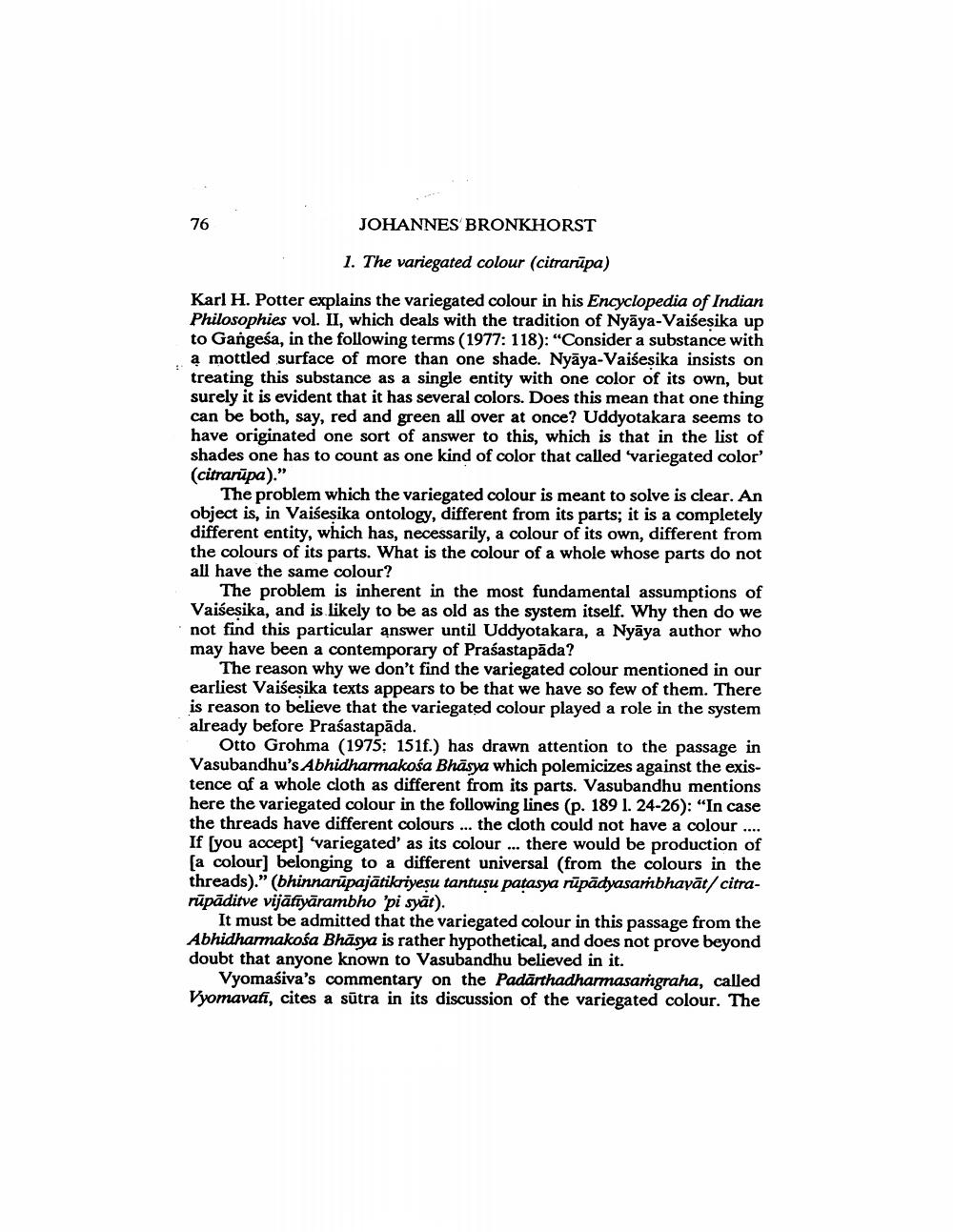Book Title: Studies On Bhartrhari 5 Bhartrhari And Vaisesika Author(s): Johannes Bronkhorst Publisher: Johannes Bronkhorst View full book textPage 2
________________ JOHANNES BRONKHORST 1. The variegated colour (citrarūpa) Karl H. Potter explains the variegated colour in his Encyclopedia of Indian Philosophies vol. II, which deals with the tradition of Nyāya-Vaiśesika up to Gangesa, in the following terms (1977: 118): "Consider a substance with a mottled surface of more than one shade. Nyāya-Vaiśesika insists on treating this substance as a single entity with one color of its own, but surely it is evident that it has several colors. Does this mean that one thing can be both, say, red and green all over at once? Uddyotakara seems to have originated one sort of answer to this, which is that in the list of shades one has to count as one kind of color that called 'variegated color' (citrarūpa)." The problem which the variegated colour is meant to solve is clear. An object is, in Vaiśesika ontology, different from its parts; it is a completely different entity, which has, necessarily, a colour of its own, different from the colours of its parts. What is the colour of a whole whose parts do not all have the same colour? The problem is inherent in the most fundamental assumptions of Vaiśesika, and is likely to be as old as the system itself. Why then do we not find this particular answer until Uddyotakara, a Nyāya author who may have been a contemporary of Prasastapāda? The reason why we don't find the variegated colour mentioned in our earliest Vaiśesika texts appears to be that we have so few of them. There is reason to believe that the variegated colour played a role in the system already before Prasastapāda. Otto Grohma (1975: 151f.) has drawn attention to the passage in Vasubandhu's Abhidharmakośa Bhāsya which polemicizes against the existence of a whole cloth as different from its parts. Vasubandhu mentions here the variegated colour in the following lines (p. 189 1. 24-26): “In case the threads have different colours ... the cloth could not have a colour .... If you accept] 'variegated' as its colour ... there would be production of (a colour) belonging to a different universal (from the colours in the threads)." (bhinnarūpajātikriyesu tantusu patasya rūpādyasarbhayāt/ citrarūpāditve vijāfiyārambho 'pi syāt). It must be admitted that the variegated colour in this passage from the Abhidharmakośa Bhäsya is rather hypothetical, and does not prove beyond doubt that anyone known to Vasubandhu believed in it. Vyomaśiva's commentary on the Padārthadharmasarngraha, called Vyomavati, cites a sūtra in its discussion of the variegated colour. ThePage Navigation
1 2 3 4 5 6 7 8 9 10 11 12 13 14 15 16 17 18 19 20
